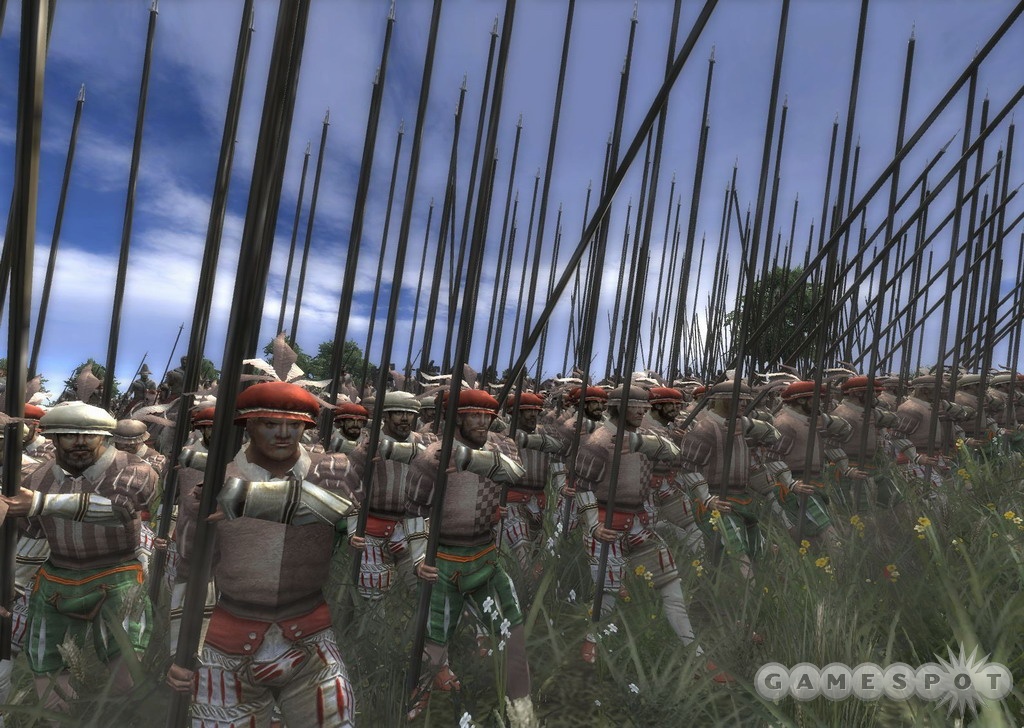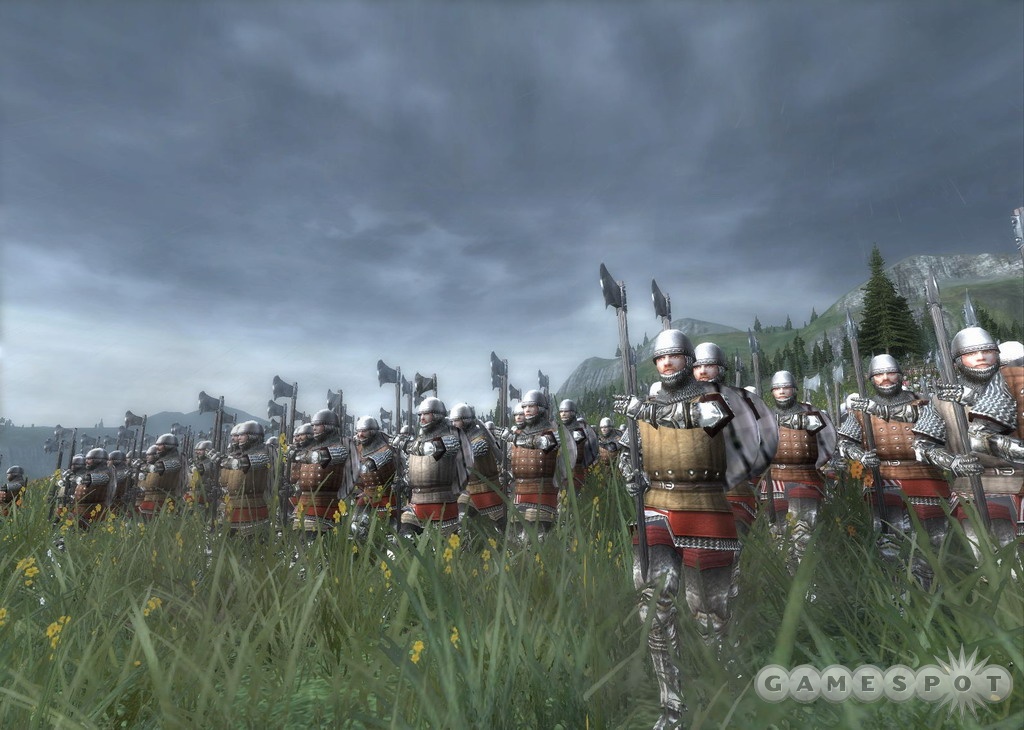Medieval 2: Total War Designer Diary #7 - Down With Clone Armies
Senior artist Jason Dalton explains how Creative Assembly got rid of the clone armies of Rome: Total War and came up with some of the best-looking medieval armies to date.
While most real-time strategy games require you to simply throw units into battle as quickly as you can produce them, the Total War games force you to use proper tactics to succeed on the battlefield. In Medieval 2: Total War, this means that you'll need to use infantry, archers, cavalry, and artillery properly. Infantry will form the bulk of your armies and will battle other infantry, while pike-equipped infantry can counter enemy cavalry. Archers can rain death down on infantry formations but can be shredded by a good cavalry charge. And artillery will be useful for pounding down the walls of a castle or city. What you'll also notice about Medieval 2 is the sheer visual quality of the graphics. In particular, soldiers will no longer look completely identical to one another like they did in Rome: Total War. To explain why, we have senior 3D artist Jason Dalton from developer Creative Assembly. Medieval 2 is scheduled to ship later this year.
Down with Clone Armies
By Jason DaltonSenior 3D Artist, Creative Assembly Australia
With the foundation for 3D unit models already laid down in the Rome: Total War engine, we were able to take a step back from it and ask ourselves what features we would like to add and what would give a more exciting look to the battle experience. One thing that immediately stood out to us was the "clone armies." Basically, in Rome you had one model per unit type, which was multiplied by the number of men in that particular unit.

For example, a unit of 60 levy spearmen in the Barbarian Invasion expansion would have been created by using one character model representing a spearmen and one diffuse texture cloned 60 times to form that one unit. This method looked fine from a distance, but zoom in on your battle, and you really notice that your spearmen all look exactly the same.
What we are aiming to do in Medieval II is to give each soldier a more-unique look, personality, and individuality. We came up with several methods to go about doing this. With the multiple body parts, each soldier model's variations, on average, consist of five to seven different heads/faces, three torsos, three sets of arms, and three pairs of legs. These are combined to make the base soldier models for each unit of men.
To add even more variety among the soldiers in one unit, we have given them up to 10 different shield variations as well as weapon model/texture variants. Shields and weapons are now separate from the unit model file itself. This allows us to simply edit a text file to change what shield type/weapons are available to a particular unit.
As the battles rage on, individual soldiers will get dirtier and bloodier depending on what they've done during the battle. So if a soldier has been marching for a long time, he will no longer look fresh and clean as he did in Rome. The same can be said for a soldier that has received many hits in battle and is still alive--his clothes, weapon, and shield will become more and more drenched in blood.

Meanwhile, when you upgrade a unit's armor and weapons in the campaign game you will be able to see these upgrades on the unit models themselves on the battlefield. So an upgraded unit of crossbowmen will look quite different from a regular unit of the same type of crossbowmen.
And with the graphics engine having been overhauled, we can now use the latest shader technology to render our units a lot more realistically. This includes normal mapping, specular mapping, pseudo high dynamic range environment mapping, and self-shadowing. Thanks to all these innovations, the unit models are already looking superb and can only get better as the project comes closer to completion.
Got a news tip or want to contact us directly? Email news@gamespot.com
Join the conversation